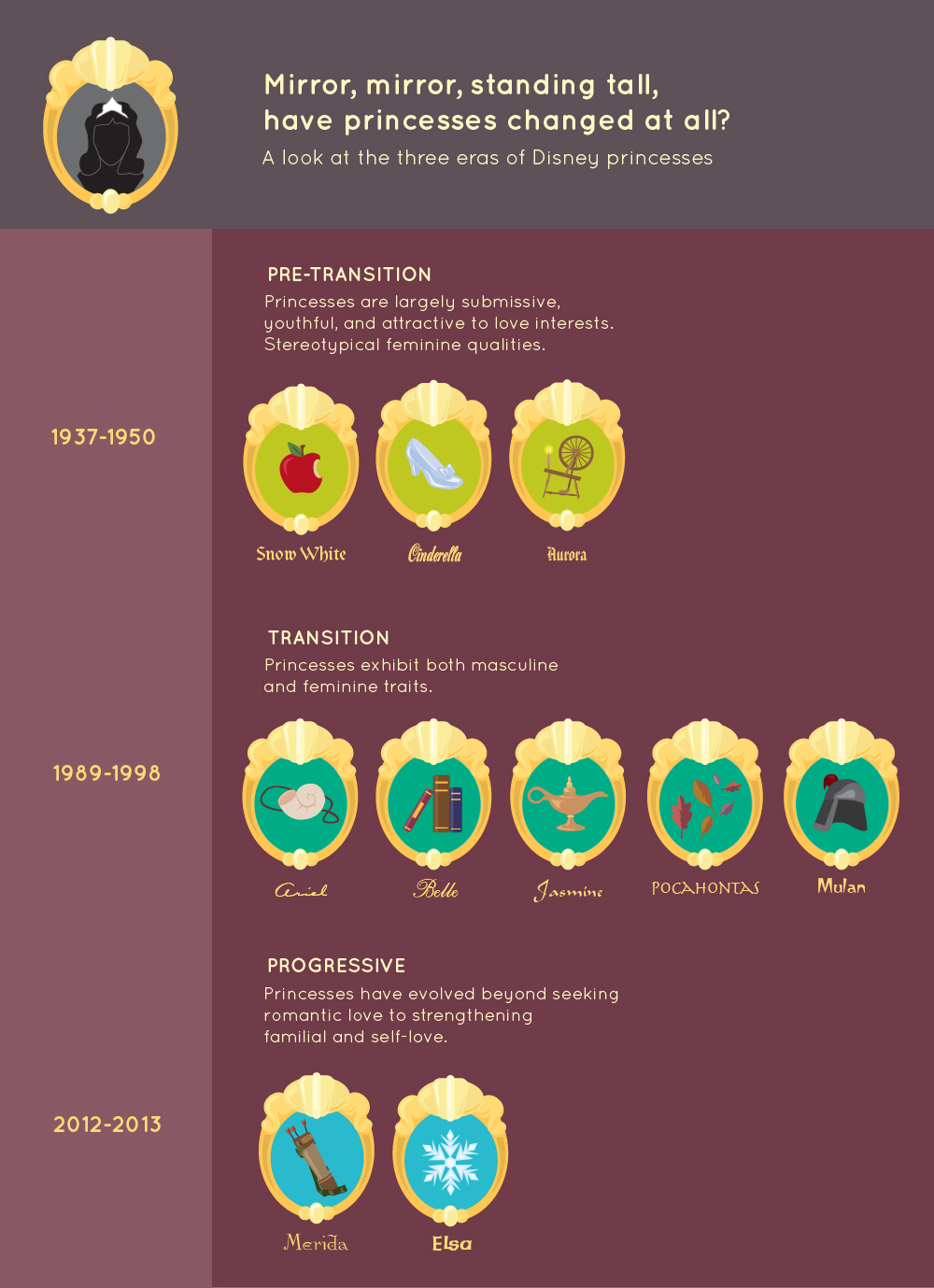The evolving Disney princess
Student research receives global attention
Arts and Culture
SUMMARY: From Snow White to Elsa from "Frozen," Disney princesses have gone through transformations reflective of society at large.
For the past 80 years, Disney princesses have captivated generations of young fans around the world.
JMU alumnae Juliana Garabedian (’15, ’17M) and Rachel Johnson (’15M) have published scholarly articles on how this influence has affected perceptions of body image, gender roles and the portrayal of love, and how the entertainment powerhouse has made efforts to “redefine” the modern princess. From Snow White to Elsa from “Frozen,” Disney princesses have gone through transformations reflective of society at large.
According to the research, there are three eras of Disney princesses: pre-transition, transition and progression. Pre-transition princesses, such as Snow White, Cinderella and Sleeping Beauty, are largely submissive, youthful and attractive to love interests — all stereotypical feminine qualities. The transition period encompasses “The Little Mermaid,” “Beauty and the Beast,” “Aladdin,” “Pocahontas” and “Mulan.” The princesses in these movies exhibit both masculine and feminine traits. Now, with the heroines of “Brave” and “Frozen,” Disney princesses have evolved beyond seeking romantic love to strengthening familial and self-love.
Reflecting on this progress, Garabedian said, “Even though Disney has been making strides toward creating more realistic princesses, I think it will take time for bigger changes to be made. First and foremost, Disney is in the business of making money, and it knows from previous movies that certain images and lifestyles are well received enough to make a profit, but the demand for princesses to be realistic is helping to change this perspective.”
Johnson writes, “Women come in all shapes and sizes, possess both masculine and feminine traits, and pursue all kinds of love. Creating female characters who are more diverse could help combat stereotypical views that exist when it comes to body image, gender roles, and the concept of love.”
Both articles have gained not only university attention, but also views from around the world, with more than 4,000 downloads combined.
“When I first found out about how many times my paper had been downloaded and how far it had traveled, I laughed because I thought it would only be read by my mom,” Garabedian said. “This past year was a great experience for me because I had the opportunity to see my research reach a global audience I had never even anticipated.”
###
By Kaity Kirwin (’16), JMU Communications and Marketing
